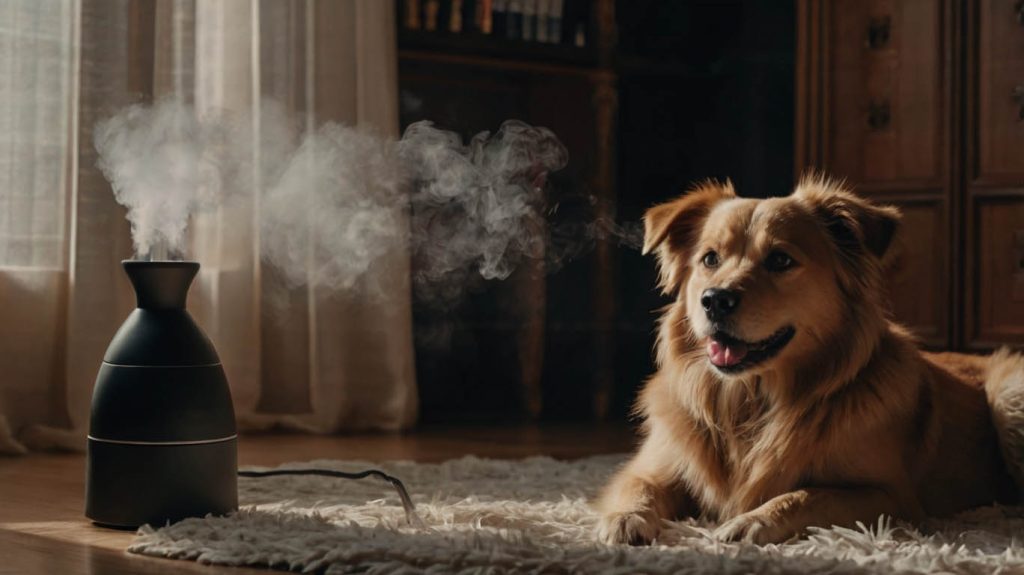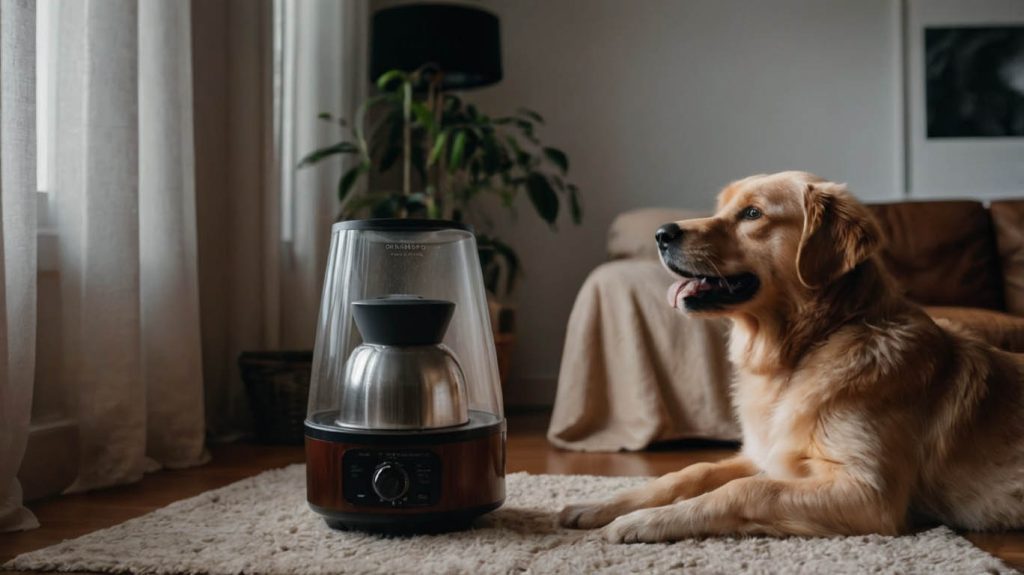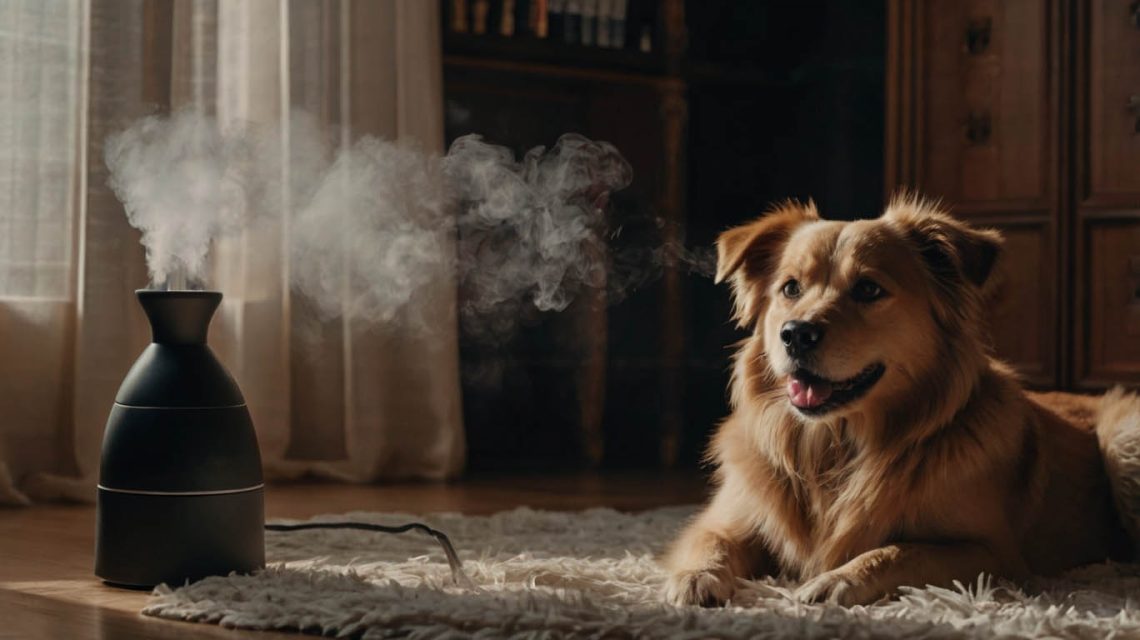Are Diffusers Safe for Dogs? The Definitive Guide for Pet Owners
Tom loved his new essential oil diffuser. After a stressful day, the calming scent of eucalyptus filling his apartment was his favorite way to unwind. His terrier mix, Rusty, always curled up on the rug nearby, seemingly unfazed. One evening, Tom noticed Rusty was coughing and seemed unusually lethargic. He initially dismissed it as a minor cold. However, the next day, after running the diffuser again, Rusty’s cough worsened, and he started drooling. A sudden, chilling thought struck Tom: was his beloved diffuser the cause? He found himself frantically searching, “are diffusers safe for dogs?”
Tom’s experience is a story that plays out in homes everywhere. As we embrace the wellness benefits of essential oils, many of us unknowingly introduce potential hazards into our pets’ environment. The internet is a whirlwind of conflicting advice, making it nearly impossible to distinguish fact from fiction.
Consequently, this guide is designed to be your clear, authoritative resource. We will break down the science of why diffusers pose a risk, identify which oils are dangerous, and provide a non-negotiable safety checklist for pet owners. Therefore, you can get a definitive answer to the critical question: “are diffusers safe for dogs?”
The Critical Answer: So, Are Diffusers Safe for Dogs?
Let’s address the main concern immediately. No, diffusers are not inherently safe for dogs. Their safety is entirely conditional and depends on three crucial factors:
- The specific essential oil you choose.
- The concentration of the oil being diffused.
- Your dog’s individual health and sensitivity.
A dog’s body is fundamentally different from a human’s. Their sense of smell can be up to 100,000 times more powerful, and their liver metabolizes substances differently. Overlooking these facts is how a well-intentioned effort to create a pleasant home can turn into a dangerous situation.

Understanding Why Diffusers Can Be Unsafe for Dogs
When you use an ultrasonic diffuser, you are dispersing a micro-fine mist of water and essential oil droplets into the air. These potent droplets can harm your dog in two major ways.
Inhalation Risks and a Dog’s Sensitive Lungs
The microscopic oil particles can be easily inhaled deep into your dog’s respiratory tract. For many dogs, this can cause significant irritation and inflammation. This risk is especially high for:
- Brachycephalic (flat-faced) breeds: Pugs, Bulldogs, and French Bulldogs already have compromised airways.
- Dogs with asthma or bronchitis: The oil particles can trigger a severe asthma attack or coughing fit.
- Puppies and senior dogs: Their respiratory systems are more delicate.
The scent that you find calming can be a powerful, overwhelming irritant to your dog’s sensitive nose and lungs.
Toxicity Risks from Ingestion and Skin Contact
Those tiny oil droplets don’t just stay in the air. They settle on every surface in the room, including your dog’s fur, bedding, and water bowl. When your dog grooms itself or drinks from its bowl, it ingests these oils. This is where the real danger lies. A dog’s liver lacks certain enzymes needed to break down the compounds in many essential oils. This can lead to a toxic buildup, potentially causing liver damage, organ failure, or severe neurological symptoms. This is a primary reason the answer to “are diffusers safe for dogs” is so complex.
The “Do Not Diffuse” List: Essential Oils to Avoid
This is the most critical information for any dog owner. The following common essential oils are known to be toxic to dogs and should NEVER be used in a diffuser in a home with pets.
- Tea Tree (Melaleuca): Extremely toxic. Can cause stumbling, weakness, tremors, and depression.
- Pine Oil: Can cause skin and airway irritation, vomiting, and neurological issues.
- Wintergreen & Birch: Contain toxic aspirin-like compounds that can cause organ failure.
- Cinnamon & Clove: Potent irritants that can damage the liver and airways.
- Pennyroyal: A known and severe liver toxin. It should be completely avoided.
- Eucalyptus: Can cause excessive drooling, vomiting, and nervous system depression. This was the oil that made Tom’s dog, Rusty, sick.
- Ylang Ylang, Anise, Thyme: And many others. The list of unsafe oils is far longer than the list of potentially safer ones.

Are ANY Diffusers Safe for Dogs? The Cautious Approach
While the risks are significant, some vets and pet owners find a middle ground by following extremely strict safety protocols with a very limited list of oils.
A Short List of “Safer” Oils
If you are going to diffuse, you should only ever consider these oils, and only after consulting your vet:
- Lavender (Lavandula angustifolia): Known for its calming properties.
- Chamomile: Gentle and soothing.
- Frankincense: Earthy and grounding.
- Cedarwood (Juniperus ashei ONLY): A pet-safe variety with a calming, woodsy scent.
Even with these oils, safety is not guaranteed; it is conditional on proper use.
The Non-Negotiable Safety Rules for Using a Diffuser
If, after speaking with your vet, you choose to use a diffuser, you must follow these rules every single time. This is the only way to answer “are diffusers safe for dogs” with any level of confidence.
- Rule #1: Your Vet is Your First Call. This is the most important step. Discuss the specific oils you want to use with your veterinarian before you even open the bottle.
- Rule #2: Extreme Dilution is Mandatory. Use far fewer drops of essential oil than recommended for humans. 1-2 drops total in a standard 100-200ml water diffuser is more than enough.
- Rule #3: Provide an Escape Route. This is critical. Your dog must have a clear and easy way to leave the room and go to another part of the house where the air is fresh. Never run a diffuser in a small, enclosed room where your dog is trapped.
- Rule #4: Diffuse for Short Periods Only. Do not run your diffuser all day. Limit sessions to 20-30 minutes, then turn it off and allow the air to clear for several hours.
- Rule #5: Observe Your Dog’s Body Language. Pay close attention. If your dog is sneezing, coughing, drooling, seems agitated, or leaves the room, it’s a clear signal that the scent is bothering them. Stop immediately.
Warning Signs of Diffuser Toxicity in Dogs
Recognizing the signs of poisoning is crucial. If you see any of these, turn off the diffuser, move your dog to fresh air, and call your vet or the Pet Poison Helpline immediately.
- Drooling or excessive salivation
- Vomiting or diarrhea
- Lethargy, weakness, or depression
- Stumbling or wobbliness (ataxia)
- Coughing, wheezing, or difficulty breathing
- Muscle tremors or seizures
Case Study Resolved: How Tom Found a Safer Path for Rusty
Let’s return to Tom and Rusty. After his frightening experience, Tom threw out his eucalyptus oil. He had a long conversation with his veterinarian, who explained the risks. The vet agreed that a very cautious approach with lavender could be tried. Tom now only diffuses 1-2 drops of high-quality lavender oil for 20 minutes in his large, open living room, always leaving the bedroom door open for Rusty. He watches Rusty carefully during this time. Rusty is no longer coughing or lethargic, and Tom has learned that the answer to “are diffusers safe for dogs” lies in prioritizing his pet’s health over a fragrant home.
The Final Verdict: Prioritize Your Pet’s Safety
While the idea of a naturally scented home is appealing, the potential for harm to our canine companions is very real. The risks associated with diffusers often outweigh the benefits. Your dog’s health depends on the air they breathe being clean and safe, not on it smelling like a forest or a field of flowers.
Your pet’s safety should always be your number one priority. We strongly urge you to speak with your veterinarian before using any essential oil diffuser in your home. They can recommend proven, pet-safe alternatives for air freshening. Share this guide to help other loving dog owners make safe, informed choices.


